|
Because of the wide
variety of magic lanterns it is almost impossible to classify them in
categories. There will always be borderline cases and exceptions and we
always could class many of them under several groups. Besides many models were launched in several sizes and in that case we could classify the smaller ones as toy lanterns and the bigger ones as parlour lanterns. Nevertheless we will have a try. Toy lanterns or Children's lanterns. These magic lanterns have small dimensions, have a plain construction and were cheap. They originally were provided with a candle or a small oil lamp as source of light. They are only suitable for showing small magic lantern slides of about 2 till 4 cm wide. Parlour lanterns. These lanterns are already a bit larger, have a more solid construction and are consequently more expensive. Because of the larger and more dangerous oil lamps they must not be considered as a toy. Larger lanterns. The kind of magic lanterns that were used to present lectures in large rooms and for teaching students at schools or university. Plural lanterns. These lanterns were mostly made of wood and brass and consisted of two or three single lanterns that were placed on top of each other or sometimes placed side by side. Thus amazing effects could be performed, like dissolving views. Special lanterns. By this we understand among other things the magic lanterns that are able to show not alone glass magic lantern slides, but also films or non-translucent cards or films, like the cinematographs and episcopes. Also remarkable lanterns like the lamposcope and the street lantern are classed here. Fancy lanterns. An exclusive category is build by magic lanterns that are not recognisable as a magic lantern at first sight because they are disguised as something else, like a Buddha, a mosque or an Eiffel tower. |
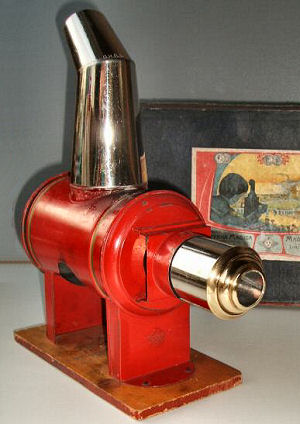 |
This kind of 'lying barrel' magic
lanterns has been made by several manufacturers. This one is made by the
German Gebrüder Bing Nuremberg (c. 1905). Their trademark G.B.N. is
pressed in the front support. The magic lantern is suitable for a small
oil lamp. This model 'EOS' was sold in eight different sizes. This is the tallest, 34 cm high, and suitable for glass slides of 8 cm wide. On account of the larger sizes of the magic lantern slides and the somewhat more powerful oil lamp the projected images were considerable clearer and more detailed than those of the smaller toy lanterns. The cardboard box that contains the lantern also has a compartment for a set of twelve matching magic lantern slides. |
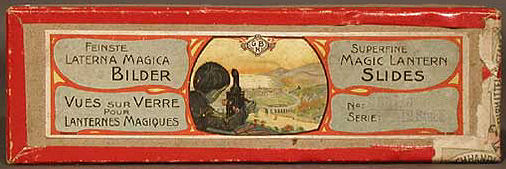 The magic lantern slides also were sold separately in a cardboard box, mostly as a set of twelve glasses. These slides are made by Gebrüder Bing and show the trademark G.B.N. |
||
|
Magic lantern 'Helios' made by the Bing Brothers, Nuremberg. The magic lantern is included in the 1906 Catalogues: 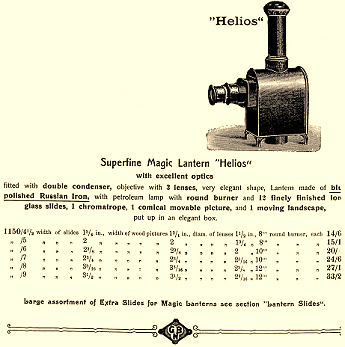 |
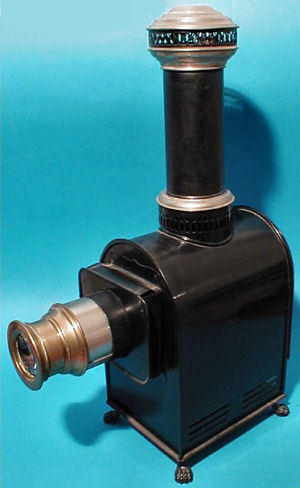 |
|
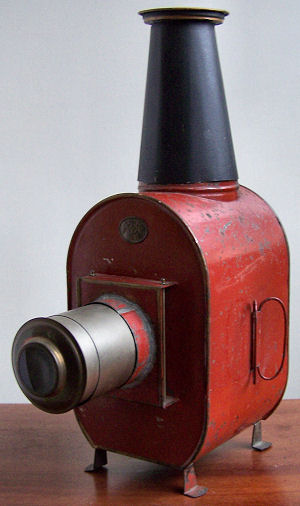 Magic lantern with a trade mark 'E.P.' (Ernst Plank) at the front. Circa 1900, Germany. |
Mailbox model. Red painted tin.
Black painted chimney with gold-coloured edgings. Optical system in two
parts with a messing ring for the lens. Sideward hinged door at the
back. Two pins in the slide holder keep a thin slide on its place. The
pins can be removed quickly and simple when thicker slides in a wooden
frame have to be shown.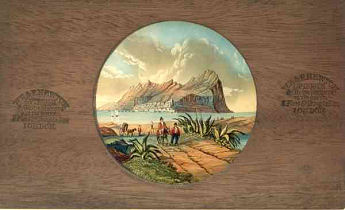 One side is provided with two handles that can be fold out. Suitable for slides of 8 cm wide. The sizes are approx.: long 23 cm, wide 13 cm, tall 35.5 cm including the chimney. |
|
|
Deviating from other
manufacturers in Nurnberg like Bing en Ernst Plank, Max Dannhorn was
specialized in making magic lanterns. Usually the models are decorated
exuberantly. This beautiful magic lantern from 1885 is provided with a
brass chimney and base. The lamp house is lacquered red. The base of the
lantern serves as an oil reservoir fotr the built-in lamp at he same time. This magic lantern is suitable for slides of 3.5 cm wide. |
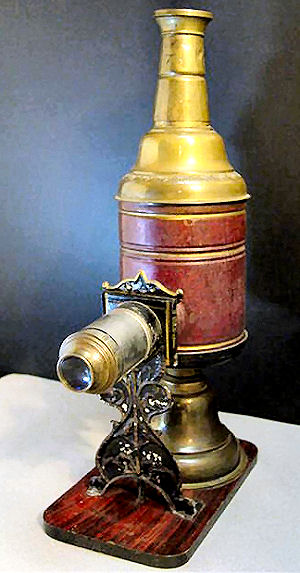 |
|
 |
||
|
The two largest French
manufacturers of magic lanterns, Lapiere and Aubert, made models that
resembled each other often strongly. They are obviously recognisable as
French magic lanterns by their colourful painting with a transparent
alcohol varnish. This one is made in 1880 by the two brothers Lapierre.
The model was called Lanterne Riche and has been produced in nine
different sizes. The larger models can be ranked among the parlour
lanterns as well and were very expensive. That is why they have been
sold hardly ever and why they are rather exceptionally nowadays. The lantern can be opened in the front only by shifting the slide holder aside. The largest was 55 cm tall, the smallest less than 20 cm. |
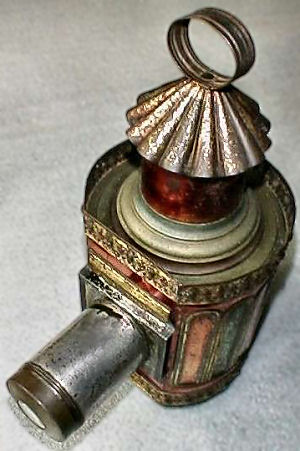 |
|
 French magic lantern slide. |
||
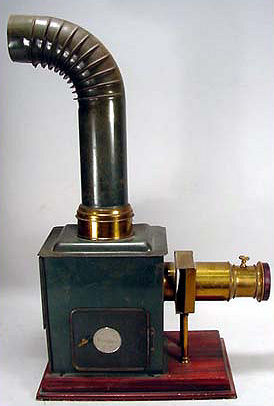 |
By its height of 20 inch (51 cm)
the 'Prophet' made by Ernst Plank was one of the manufacturer's largest magic lanterns. The box contained even a real poster and admission tickets. |
|
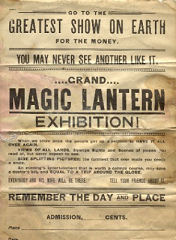
 |
||
|
This wonderful magic lantern could
be ranked as a special lantern as well, for the splendid painted ceramic
tiles make this lantern to a real curiosity. This 'Keramik Laterne' was made around 1895 by Johann Falk. Three walls of the lamp house are composed of 'Keramikfliessen'. There exist a lot of different designs with various varicoloured flower adornments. On account of the vulnerability of the tiles there are unfortunately not much left nowadays. See also: Ceramic lanterns. |
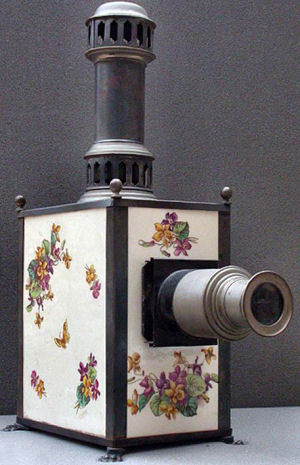 |
|
| Select another sort of magic lantern by clicking one of the images below: | |||||
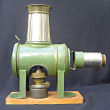 |
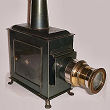 |
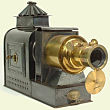 |
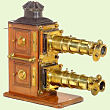 |
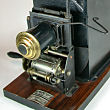 |
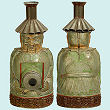 |
| |
©1997-2021 'de Luikerwaal' All rights reserved. Last update: 10-05-2021. |
|